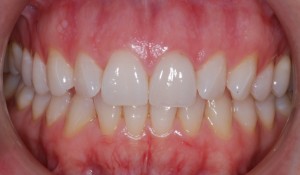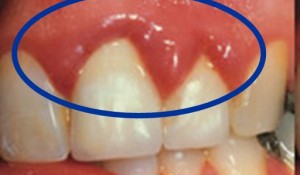


What is Periodontal Disease?
Periodontal disease is an infection of the teeth, gums, and the bone that surrounds the teeth.
Nothing is more distracting, or destructive, to an otherwise healthy, beautiful smile than red, swollen, or bleeding gums. In fact, periodontal disease, not decay, is the major cause of tooth loss.
Nearly 3 out of 4 adults have some form of this disease in which bacteria attack the support for the teeth causing them to loosen. Unfortunately, most people who have periodontal disease are not aware of it because it's rarely painful, especially in early stages. Unless you have regular dental check-ups, including a periodontal exam, you may not be aware that you have a problem. Left untreated, periodontal disease will progress until your gums and bone have been seriously affected.

Healthy gums

Periodontal disease
What causes Periodontal Disease?
The main cause is the accumulation of plaque. Plaque is the sticky film of food and bacteria that forms constantly on the teeth. Even if you brush and clean between your teeth frequently, you may not completely remove all the plaque, especially around the gum line. Each day, the plaque that isn't removed builds up and hardens into a rough, porous deposit called calculus, or tartar, which attaches to the surface of the tooth roots. The bacteria that cause periodontal disease grow in tartar. These bacteria produce toxins, and it's these toxins, combined with your body's response to them, that destroy the bone. Only a dentist or hygienist can remove tartar with a professional cleaning, because once it sticks to the tooth, there is no way to remove it at home. Neither a toothbrush nor floss will budge it.
What are the warning signs of Periodontal Disease?
Learn more about Periodontal Disease: